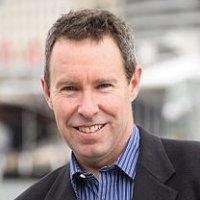
The renewable energy offshoot of Toyota Corp, the Japanese industrial giant, has taken a 50 per cent stake in a ground-breaking wind and solar hybrid energy park that could deliver “base load” energy to northern Queensland.
Australian company Windlab and Eurus Energy – majority owned by Toyota Tsusho Corp with the balance held by the Tokyo Electric Power Company – says it will begin construction of the $140 million Kennedy wind park within 12 months.
The first stage will see around 40MW – split evenly between wind and solar – built near the township of Hughendon, around 300km inland from Townsville.
This will be used to attract further investment for a “second stage” development, that would total 120MW, and then proceed to a massive park that could comprise 1,200MW of wind and solar, and possibly up to 10MW of lithium-ion battery storage.
Windlab CEO Roger Price said the Kennedy Energy Park was an ideal location, selected for its “world class” solar irradiance and wind energy profile.
“This particular site has been carefully mapped and we know it is predominantly windy through the afternoon and into the evening, and obviously experiences sunlight during daylight hours. This resource profile ensures almost constant energy production,” he said.
“In combination, these natural resources can provide a net capacity factor approaching 70 per cent, better than “base load” coal utilisation in Queensland,” which he puts at around 60 per cent at the moment in Queensland.
With an energy park of 1,200MW, Price says the facility could meet all the local demand requirements of north Queensland “more than 80 per cent of the time.”
While Eurus and Windlab will share ownership of the facility, the first stage still needs a power purchase agreement to get the go ahead. But Price said the outlook for PPAs has improved dramatically in recent weeks. “We are seeing much more positive discussions,”
The Kennedy Park deal follows on from another deal struck between Windlab and Eurus earlier this year, with the parties committing to, and beginning construction on, the Coonooer Bridge Wind Farm in Victoria. Eurus also owns the Hallett 5 wind farm in South Australia.
Kennedy Park will be the first large-scale hybrid solar/wind plant to be built in Australia – although Infigen Energy has added a small amount of solar power to its Capital wind farm near Canberra. But it has become a common combination elsewhere, with Ecotricity currently building three such energy parks in the UK.
The company has not yet chosen suppliers, but says the project will likely use new wind turbines of around 3.56MW that span 136 metres in diameter – the largest seen in Australia – along with around 64,000 solar panels spread over 80 hectares.
At the moment, more than 90 per cent of Queensland’s electricity needs are generated by fossil fuels. However, there is a major push to renewable energy, with the new Labor government setting a 50 per cent renewable energy target for 2030, and Ergon Energy setting a tender for 150MW of renewable energy capacity (for which Kennedy is competing).
In addition, the Australian Renewable Energy Agency and the Clean Energy Finance Corporation is offering a total of $350 million in grants and cheap loans to help finance solar projects, and independent analysts and utilities such as Origin Energy see big potential for large-scale solar in the state.
Eurus Energy president and CEO Hideyuki Inazumi said its involvement in the development of Kennedy “demonstrates our continuing commitment to the Australian renewable energy market”.
Flinders Shire mayor Greg Jones said the council was backing the project. “The Council is very supportive of renewable energy initiatives and we are keen to continue to work with Windlab and Eurus to see this project built in the Shire of Flinders.”
Price said construction of the Kennedy Park project is expected to begin after June next year, if a PPA is obtained.